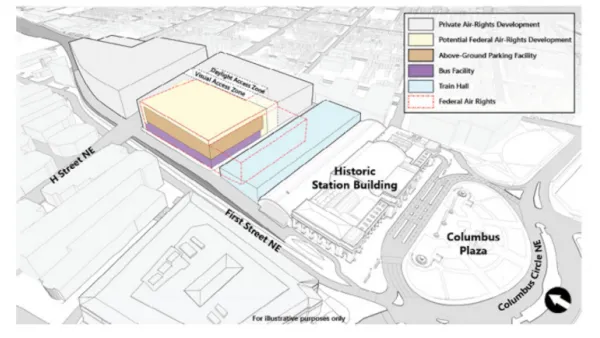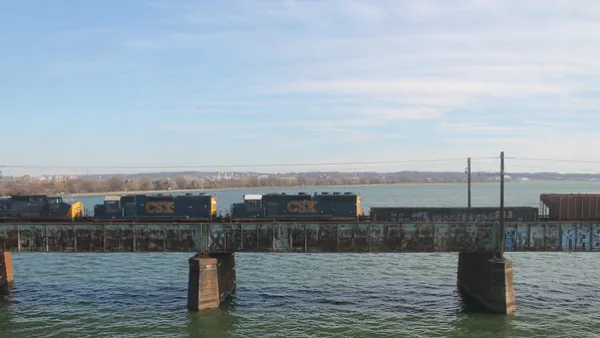Criticisms of a draft plan to revamp D.C.'s Union Station have described the proposal as far too concerned with car storage.

Following controversy this summer about the proposal to revamp Union Station in Washington, D.C., the team behind the revamp has offered a new vision for the project, one more focused on people, placemaking, and transit, than car parking.
According to an article by George Kevin Jordan, "Akridge, the company that owns the air rights above rail tracks, and oversees Burnham Place, a sibling development project at Union Station, has offered up some new renderings and a video offering an alternative vision of the renovation project."
The controversy created by the number of parking spots included in the proposed redesign created news in July, but the earlier iteration's treatment of car pick up and drop off and the station's bus station have also faced fierce debate, according to the article. The concerns about the previous design were enough to compel D.C. Andrew Trueblood, director of D.C.’s Office of Planning, to release a statement criticizing the proposed designs.
Jordan provides a lot of detail about how the new designs have revised the previous designs, breaking down how the new designs address each of the areas listed above to make Union Station both a place for millions of people to pass through efficiently (100,000 people use the station every day, according to the article), but also to create a sense of place at the station that makes people want to stay a little while.
The Draft Environmental Impact Statement (DEIS) for the Washington Union Station Expansion Project, created by the Federal Rail Administration (FRA), is available for public review and comment until September 28.
FULL STORY: New renderings offer a revamped vision of a Union Station designed for people, placemaking, and transit

National Parks Layoffs Will Cause Communities to Lose Billions
Thousands of essential park workers were laid off this week, just before the busy spring break season.

Retro-silient?: America’s First “Eco-burb,” The Woodlands Turns 50
A master-planned community north of Houston offers lessons on green infrastructure and resilient design, but falls short of its founder’s lofty affordability and walkability goals.

Delivering for America Plan Will Downgrade Mail Service in at Least 49.5 Percent of Zip Codes
Republican and Democrat lawmakers criticize the plan for its disproportionate negative impact on rural communities.

Test News Post 1
This is a summary

Test News Headline 46
Test for the image on the front page.

Balancing Bombs and Butterflies: How the National Guard Protects a Rare Species
The National Guard at Fort Indiantown Gap uses GIS technology and land management strategies to balance military training with conservation efforts, ensuring the survival of the rare eastern regal fritillary butterfly.
Urban Design for Planners 1: Software Tools
This six-course series explores essential urban design concepts using open source software and equips planners with the tools they need to participate fully in the urban design process.
Planning for Universal Design
Learn the tools for implementing Universal Design in planning regulations.
EMC Planning Group, Inc.
Planetizen
Planetizen
Mpact (formerly Rail~Volution)
Great Falls Development Authority, Inc.
HUDs Office of Policy Development and Research
NYU Wagner Graduate School of Public Service





























